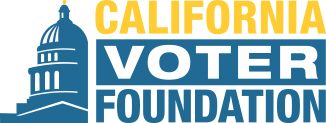Excerpts:
California’s primary election won’t be remembered for what happened in a sprawling state Senate district that stretches from Lake Tahoe to Death Valley. But maybe it should.
After all, the one sure thing in the election that ended Tuesday was supposed to be that Republicans win elections in California’s 4th Senate District. The region backed former President Trump twice along with an array of Republicans in national and statewide races stretching back to at least 2010.
But early election results have produced a surprise. Two Democrats appear poised to advance to the Nov. 8 ballot, the result of a six-person field of GOP candidates thinly spreading out the votes and California’s top-two primary system that made its debut in 2012.
Whether the primary’s rules have made an improvement or impediment for voters has been debated, almost nonstop, for a decade. Some of the most alluring promises made 10 years ago — that pragmatic candidates would prevail over partisans, for example — have failed to materialize.
- - - - - - - - -
Since 2012, when the top-two rules took effect, participation in primaries has averaged just 37.6% of registered voters. Tuesday’s turnout won’t be clear for a few weeks but might be below the average.
“I think the intent for the top-two was good,” said Kim Alexander, president of the nonpartisan California Voter Foundation. “But I think it’s a little too clever. It’s expecting more from the voters than is realistic.”
The promises made by supporters of the top-two primary largely fell into one of three categories: increased participation by the state’s growing number of independent voters, a decrease in the number of ultrapartisans elected to office and more competitive races for seats in the California Legislature and Congress.
“In order to change government we need to change the kind of people we send to the Capitol to represent us,” backers wrote in the 2010 voter guide in favor of Proposition 14.
But the results from a decade of primary elections seem thin — especially when considering the promise that the election rules would inspire more participation by California’s independent voters, those registered as having “no party preference.” Under the traditional “closed primary” system, political parties used to often exclude independent voters from their state and congressional primaries. In California races, Proposition 14 made a voter’s affiliation irrelevant.
And yet, independent voters haven’t rushed in to cast ballots.
Research compiled by Political Data Inc., a campaign consulting firm, shows a persistent gap in primary election turnout between voters registered with political parties and those who are unaffiliated. In 2010, just before the arrival of the top-two primary, turnout by independent voters trailed that of partisans by 17 percentage points.
- - - - - - - - -
“There’s no such thing as a perfect system,” he said. “Some of this, you’ve just got to take it in bites.”
Peace said supporters of open primaries are at work on a new version, though the hurdles for change — another ballot measure and one that is subject to the moneyed interests of politics — seem high.
And the efficacy of election reforms like the top-two primary is difficult to measure, even after 10 years and more than 900 state, congressional and legislative races run under its rules. The ultimate test is whether voters feel their interests are well represented.
“It’s easy to fill out a ballot,” said Alexander, of the California Voter Foundation. “But to make informed choices is a lot of work.” (Full Story)

